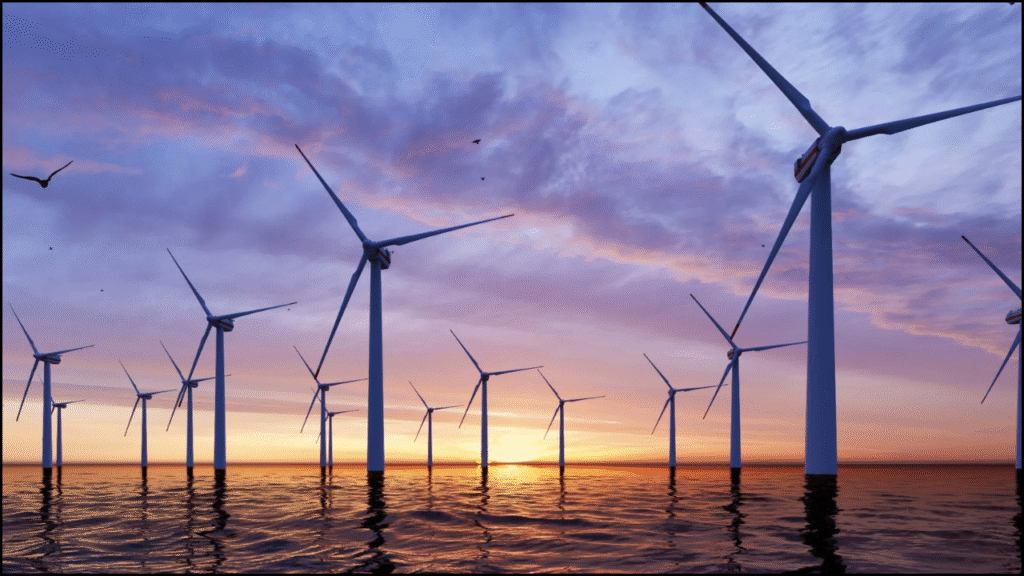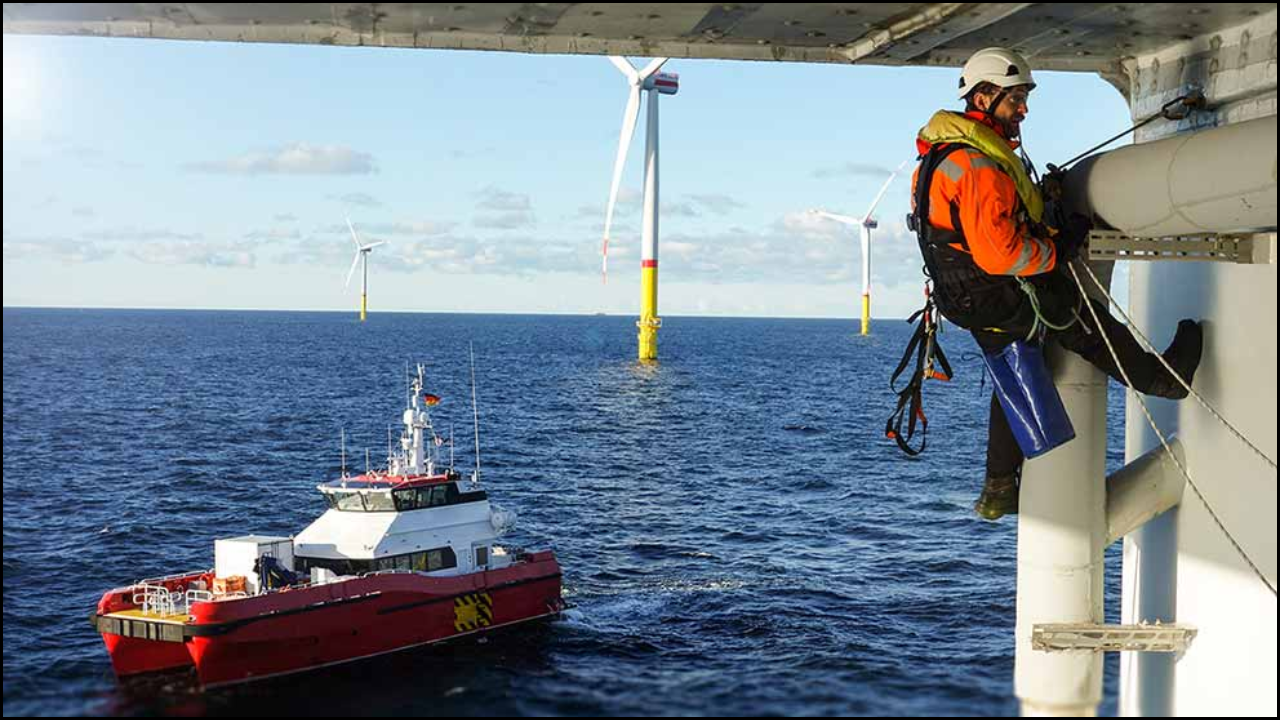
Machine learning offers powerful tools to analyze the vast amounts of data generated by offshore energy systems. Sensors, drones, and monitoring equipment continuously collect information about weather conditions, turbine performance, ocean currents, and grid demand. ML algorithms process this data to recognize patterns, predict maintenance needs, and adjust operational parameters in real time. This intelligent automation leads to higher energy yields, reduced maintenance costs, and improved system reliability across all forms of offshore renewables.
Table of Contents
Key Benefits of Machine Learning in Offshore Energy
Machine learning contributes to the offshore renewable energy sector by optimizing processes that were once dependent on manual monitoring and reactive maintenance.
- Predictive Maintenance: Anticipates component failures before they occur.
- Energy Output Optimization: Adjusts turbine settings based on weather and ocean data.
- Performance Forecasting: Predicts energy generation under varying sea conditions.
- Cost Reduction: Minimizes downtime and repair costs through automation.
- Safety Improvement: Detects operational anomalies early to prevent hazardous events.
- Grid Integration: Improves coordination between offshore generation and onshore demand.
Applications of Machine Learning Across Offshore Energy Systems
| Offshore Technology | Machine Learning Application | Outcome |
|---|---|---|
| Offshore Wind Farms | Blade angle optimization, wind speed prediction | Increased power generation efficiency |
| Tidal Energy Systems | Flow modeling and turbine speed adjustment | Enhanced reliability and energy conversion |
| Wave Energy Converters | Predictive control of oscillation and motion | Better stability and reduced mechanical stress |
| Floating Solar Plants | Real-time monitoring of panel tilt and sunlight | Improved solar capture and grid synchronization |
| Hybrid Offshore Grids | Demand forecasting and load balancing | Smarter grid integration and energy storage management |
Predictive Maintenance and Fault Detection
Predictive maintenance is one of the most impactful applications of ML in offshore renewables. Traditional maintenance schedules often lead to unnecessary servicing or unexpected breakdowns. Machine learning models, trained on sensor data, identify early warning signs of wear or damage.
- Vibration Analysis: ML detects subtle vibration changes in turbines, signaling bearing or gearbox issues.
- Acoustic Monitoring: Algorithms recognize abnormal sound patterns caused by underwater turbine fatigue.
- Thermal Imaging: Machine learning processes infrared data to detect overheating components.
- Anomaly Detection: Neural networks identify irregular power outputs that suggest impending faults.
| ML Technique | Monitored Parameter | Result |
|---|---|---|
| Supervised Learning | Historical performance data | Predicts future component failure |
| Unsupervised Learning | Real-time turbine signals | Detects unusual behavior |
| Reinforcement Learning | Operational settings | Optimizes performance under changing conditions |
| Deep Learning | Sensor and image data | Improves accuracy of fault diagnosis |
Energy Output Forecasting and Optimization
Accurate prediction of energy output is critical for balancing supply with grid demand. Machine learning models analyze wind speeds, ocean currents, and temperature variations to forecast power generation accurately.
- Wind Resource Prediction: ML integrates satellite and sensor data to forecast wind intensity.
- Wave Energy Modeling: Predicts sea-state patterns for efficient energy extraction.
- Tidal Flow Analysis: Anticipates tidal changes to schedule energy production.
- Dynamic Control Systems: Adjusts turbine angles and generator loads automatically.
| Forecasting Parameter | Machine Learning Model Used | Outcome |
|---|---|---|
| Wind Speed and Direction | Long Short-Term Memory (LSTM) Networks | Accurate real-time wind prediction |
| Wave Height and Frequency | Support Vector Machines (SVM) | Optimized wave power capture |
| Tidal Flow Velocity | Random Forest Regression | Stable tidal turbine operation |
| Power Curve Analysis | Gradient Boosting Models | Improved energy yield forecasting |
Operational Efficiency through Data-Driven Control
Machine learning improves the control mechanisms of offshore devices by continuously learning from operational data. These self-optimizing systems can adjust settings in real time to maintain efficiency under changing environmental conditions.
- Turbine Pitch Control: Adjusts blade angles for maximum aerodynamic performance.
- Yaw Alignment: Ensures turbines face the most efficient wind direction.
- Wave Energy Calibration: Fine-tunes buoy motion to extract maximum energy.
- Dynamic Load Balancing: Distributes power efficiently across connected systems.
Machine Learning for Offshore Grid and Storage Integration
As offshore renewable capacity increases, efficient grid integration becomes essential. ML assists in managing fluctuating power outputs and ensuring stable electricity delivery.
- Grid Demand Prediction: Anticipates onshore consumption patterns.
- Storage Optimization: Decides when to store or release energy from offshore batteries.
- Power Flow Management: Prevents overloads by redistributing excess power.
- Frequency Regulation: Maintains grid stability during intermittent supply.
| Integration Area | ML Application | Impact |
|---|---|---|
| Offshore Wind–Grid Connection | Load forecasting | Reduced curtailment losses |
| Battery Energy Storage | Energy scheduling | Increased system stability |
| Hybrid Offshore Systems | Predictive balancing | Efficient multi-source coordination |
| Transmission Infrastructure | Fault localization | Faster repair and restoration |
Environmental Monitoring and Risk Assessment
Machine learning also supports environmental protection and sustainability by analyzing large datasets collected from marine ecosystems.
- Marine Life Tracking: AI models detect and classify species near turbines to minimize impact.
- Weather Hazard Prediction: ML forecasts extreme storms and high-wave events for operational safety.
- Corrosion and Biofouling Detection: Image recognition identifies early signs of structural degradation.
- Environmental Compliance: Automated systems ensure adherence to international regulations.
Smart Sensors and Machine Learning Synergy
The combination of smart sensors and ML enables continuous feedback and learning loops in offshore installations.
| Sensor Type | Collected Data | Machine Learning Function |
|---|---|---|
| Strain Sensors | Structural load | Predicts fatigue and material failure |
| Acoustic Sensors | Underwater noise | Monitors turbine condition and marine impact |
| Lidar Sensors | Wind speed and direction | Guides dynamic turbine control |
| Temperature Sensors | Thermal variations | Detects overheating or electrical faults |
| Pressure Sensors | Ocean depth and wave force | Optimizes operational safety and stability |
Challenges in Implementing Machine Learning Offshore
Despite its benefits, ML integration in offshore energy systems faces technical and logistical challenges.
- Limited data availability from harsh environments.
- High computational costs for model training.
- Data transmission difficulties due to offshore connectivity limits.
- Lack of standardization for AI-based monitoring systems.
- Need for skilled personnel to manage ML-driven operations.
Future Prospects for Machine Learning in Offshore Energy
The coming decade will see deeper integration of AI and machine learning in renewable energy operations. Future innovations will enhance autonomy, reduce costs, and expand data-sharing collaborations.
- Development of AI-driven digital twins for real-time simulation of offshore assets.
- Use of federated learning for secure data sharing among international operators.
- Expansion of self-healing energy systems that detect and repair minor faults autonomously.
- Integration of edge computing for faster on-site data processing.
- Adoption of AI-optimized materials and structural designs to improve efficiency and durability.
Socio-Economic Impacts of ML-Driven Offshore Efficiency
| Impact Type | Description |
|---|---|
| Economic | Reduced maintenance costs and higher power yields improve project profitability. |
| Environmental | Efficient energy conversion lowers carbon emissions per megawatt generated. |
| Social | Creation of specialized jobs in AI engineering and data analytics. |
| Operational | Reliable systems increase energy security for coastal communities. |
Summing Up
Machine learning is transforming the offshore renewable energy landscape by making systems more efficient, resilient, and intelligent. Through predictive maintenance, data-driven control, and smart grid integration, ML maximizes energy generation while minimizing operational risks. As AI continues to evolve, its integration into offshore renewables will accelerate the global transition toward a sustainable, net-zero future powered by intelligent, adaptive technologies.





